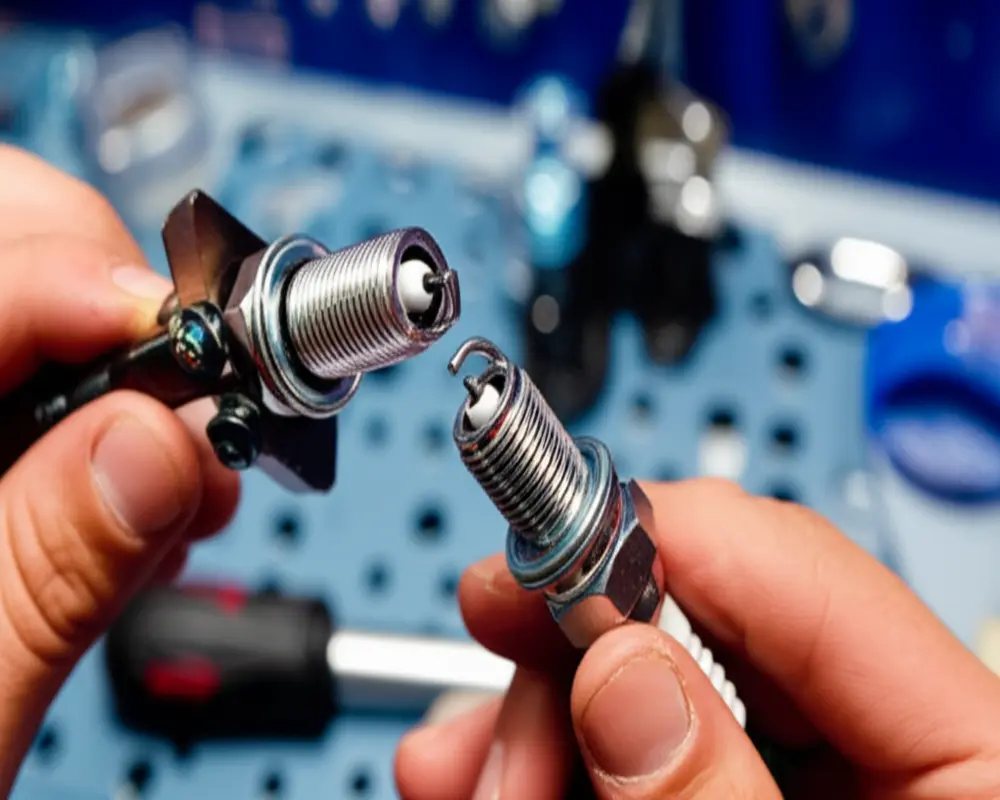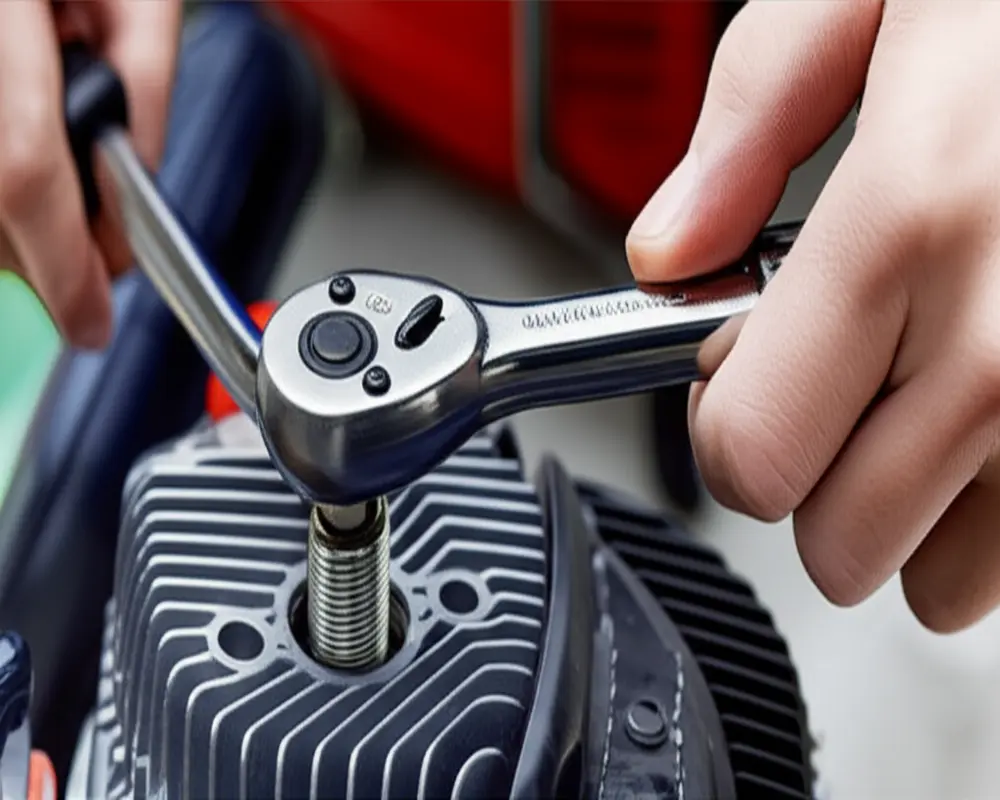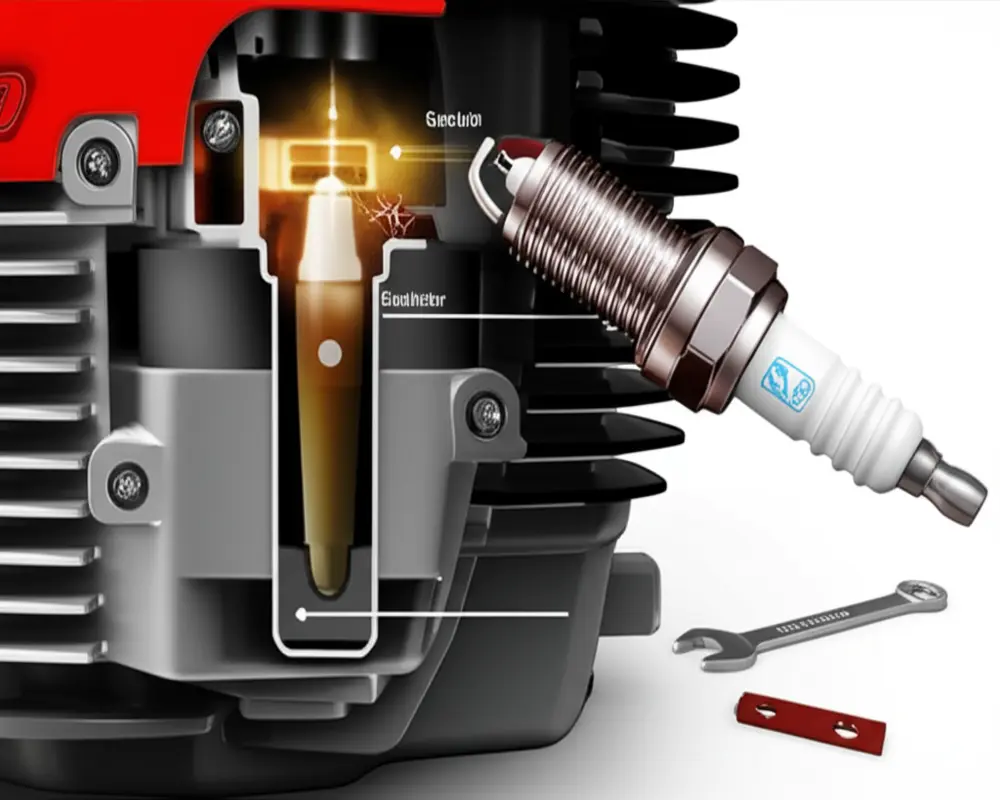Leaf Blower Spark Plug: Diagnosis, Replacement & Maintenance Guide
Is your leaf blower sputtering, struggling to start, or outright refusing to run? More often than not, the culprit is the leaf blower spark plug. This small but crucial component ignites the fuel-air mixture inside your engine, making it the heartbeat of your leaf blower. Understanding how to diagnose spark plug issues, perform a proper replacement, and maintain it can keep your equipment running smoothly and extend its engine life.
In this comprehensive guide, we'll walk you through the common symptoms of a failing spark plug, how to inspect and test it, selecting the correct replacement spark plug, and detailed step-by-step replacement instructions. Plus, we'll share maintenance tips to prevent future problems and touch on other potential starting issues beyond the spark plug. Equipped with these insights, you’ll be empowered to troubleshoot and care for your leaf blower like a pro.
Is Your Spark Plug the Problem? Common Symptoms & Diagnosis
Before you assume your leaf blower’s spark plug is faulty, it helps to recognize the typical signs. A spark plug in poor condition often leads to:
- Difficulty starting the engine or no start at all
- Rough or erratic engine running
- Loss of power or weak performance
- Excessive smoke from the exhaust
- Unusual engine sounds or backfiring
Safety first: Always disconnect the spark plug wire before inspecting to prevent accidental starts. Wearing protective gloves and eyewear is advisable.
To visually inspect the spark plug, remove it carefully using the appropriate wrench. Examine the electrode and insulator for signs of carbon fouling (black soot), oil fouling (wet and oily deposits), blistering, or electrode wear. These conditions indicate different engine or fuel problems that affect spark plug performance.
Another effective way to diagnose is performing a spark test. Using a spark tester tool or grounding the spark plug against the engine block while cranking the engine reveals the spark’s color and intensity. A strong blue spark is ideal; a weak or absent spark confirms spark plug issues.

Understanding Leaf Blower Spark Plugs: The Basics
The spark plug in a leaf blower ignites the compressed fuel-air mixture inside the engine cylinder, producing the combustion needed to power the engine. Most leaf blowers use small two-stroke engines, which rely heavily on the spark plug’s proper functioning for smooth operation.
Key attributes of leaf blower spark plugs include:
- Thread size and reach: Ensures the plug fits correctly into the engine cylinder head without causing damage.
- Heat range: Determines how quickly the plug dissipates heat; using the incorrect heat range can cause fouling or overheating.
- Spark plug gap: The distance between the center and ground electrode; a critical measurement for optimal spark generation.
- Resistor vs. non-resistor plugs: Resistor plugs reduce electrical noise that may interfere with ignition systems and electronics.
Among the trusted brands, NGK, Champion, and Bosch offer reliable spark plugs designed specifically for small engines like those in leaf blowers.
Finding the Correct Spark Plug for Your Leaf Blower Model
Selecting the correct spark plug is vital to maintaining your leaf blower’s performance and preventing engine damage. The best starting point is your leaf blower’s owner’s manual where the manufacturer specifies the exact spark plug model and specifications.
Each spark plug is marked with codes indicating thread size, heat range, and other specs. Cross-reference charts, such as those provided by NGK and Champion, can help you identify compatible alternatives if the original is unavailable.
Consider the balance between OEM (original equipment manufacturer) and aftermarket plugs. OEM plugs guarantee compatibility and quality, while reputable aftermarket plugs can offer cost-effective options without compromising performance.
Step-by-Step Guide: How to Replace Your Leaf Blower Spark Plug
Replacing a leaf blower spark plug is a straightforward task when done carefully. Here’s a detailed process to follow:
Tools Needed: Spark plug wrench, feeler gauge or spark plug gap tool, clean rag, optional anti-seize compound, and dielectric grease.
Preparation: Ensure the engine is cool to avoid burns. Clean the area around the spark plug to prevent dirt from entering the combustion chamber.
Removal: Disconnect the spark plug boot by pulling it straight off. Use the spark plug wrench to loosen and remove the old plug. Inspect it for wear or fouling to confirm the diagnosis.
Gapping the New Spark Plug: Check the recommended gap in your manual. Using a spark plug gap tool, adjust the gap by carefully bending the ground electrode. The gap typically ranges from 0.020 to 0.030 inches (0.5 to 0.75 mm) but always verify for your model.

Installation: Thread the new spark plug in by hand to avoid cross-threading. Tighten it snugly using the wrench, following torque specifications if available (usually about 10-15 ft-lb or 13.5-20.3 Nm). Avoid over-tightening to prevent damage.

Reconnect the spark plug boot firmly. Finally, test your leaf blower by starting the engine and observing its performance.
Spark Plug Maintenance & Prevention Tips
Maintaining your leaf blower spark plug extends its life and ensures consistent engine performance. Manufacturers typically recommend inspecting the spark plug every 25 hours of use and replacing it annually or as needed.
To prevent premature fouling or wear, consider these tips:
- Use the correct fuel-oil mix ratio specified for your two-stroke engine.
- Keep the air filter clean to ensure proper combustion air supply.
- Use fresh, clean fuel stored properly to avoid contamination.
- Avoid excessive idling, which can cause carbon buildup on the plug.
- Choose the correct heat range spark plug to suit your operating conditions.
Common causes of fouling include running too rich a fuel mixture, a dirty air filter, wrong spark plug heat range, or excess oil in the fuel. Addressing these underlying issues prevents recurrent spark plug problems.
Beyond the Spark Plug: Other Leaf Blower Starting Issues
If replacing the spark plug doesn’t solve your leaf blower’s starting troubles, other components may be involved:
- Fuel system problems: Stale fuel, clogged fuel filters, or carburetor malfunctions can restrict fuel flow.
- Air filter blockage: A dirty or clogged air filter chokes the engine’s air supply.
- Ignition coil failure: The coil produces the high voltage to the spark plug; a fault here can cause no spark.
- Compression issues: Worn piston rings, valves, or cylinder walls reduce compression needed for combustion.
For detailed guidance on fuel and air system maintenance, refer to Briggs & Stratton’s Small Engine Repair Guide.
Frequently Asked Questions (FAQs)
- Can I clean a spark plug instead of replacing it?
- While cleaning a spark plug may temporarily improve function, it is generally recommended to replace the spark plug if fouling or wear is significant, as cleaning doesn’t restore electrode integrity.
- Is it necessary to gap a new spark plug before installation?
- Yes, checking and adjusting the spark plug gap ensures optimal spark and engine performance. Even pre-gapped plugs should be verified as manufacturing tolerances can vary.
- What happens if the spark plug gap is incorrect?
- An incorrect gap can cause weak or inconsistent sparks, leading to poor engine starting, rough running, or reduced power.
- How much does a typical leaf blower spark plug cost?
- Prices vary but generally range from $5 to $15 per spark plug depending on brand and specifications.
- Where can I buy quality spark plugs for leaf blowers?
- Authorized dealers, hardware stores, online marketplaces, or directly from brands such as NGK and Champion are reliable sources.
- Why do new spark plugs sometimes foul quickly?
- Rapid fouling can result from underlying engine issues such as a rich fuel mixture, oil leaks, or incorrect heat range plugs. Addressing these factors is essential for spark plug longevity.
Conclusion: Empowering Your DIY Leaf Blower Maintenance
The leaf blower spark plug is a fundamental component that directly affects your equipment’s reliability and engine health. Recognizing symptoms of failure, performing proper inspection, replacement, and maintenance are skills that can save time and money while keeping your leaf blower operating at peak efficiency.
Regular checks and timely spark plug care not only improve starting and running performance but also extend the engine’s lifespan. Should you encounter persistent issues beyond spark plug troubleshooting, consulting a professional small engine technician is advisable.
Take charge of your leaf blower maintenance with confidence—share your experiences or questions to continue learning and improving your outdoor power equipment skills.
For related insights on garden tools that complement your leaf blower maintenance, explore our guides on hand cultivator tines and lawn mower starting issues.

